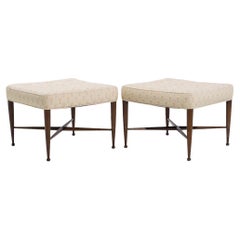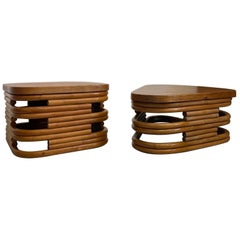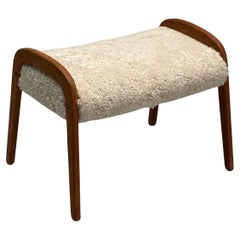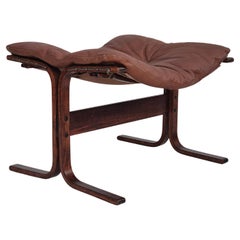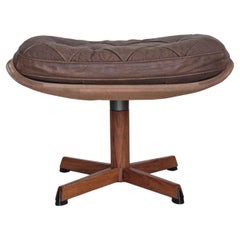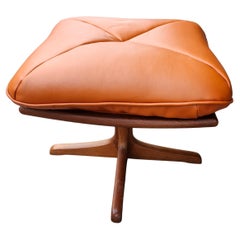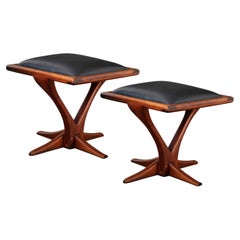1970s Wood Footstools
Vintage 1970s Italian Mid-Century Modern Footstools
Leather, Wood
Vintage 1970s American Mid-Century Modern Footstools
Upholstery, Mahogany
Vintage 1970s French Footstools
Textile, Wood
Vintage 1970s Mid-Century Modern Footstools
Rattan, Wood
Vintage 1970s Danish Mid-Century Modern Footstools
Sheepskin, Teak
Vintage 1970s Norwegian Scandinavian Modern Footstools
Leather, Canvas, Bentwood
Vintage 1970s Danish Scandinavian Modern Footstools
Leather, Teak
Vintage 1970s Danish Scandinavian Modern Footstools
Naugahyde, Oak
Vintage 1970s American Organic Modern Footstools
Leather, Walnut
Vintage 1970s Norwegian Scandinavian Modern Footstools
Leather, Rosewood
Vintage 1970s Italian Mid-Century Modern Footstools
Nutwood
Vintage 1970s Swedish Scandinavian Modern Armchairs
Velvet, Beech
Vintage 1970s English Stools
Wood, Paint, Leather
Vintage 1970s Mid-Century Modern Footstools
Fabric, Wood
Vintage 1970s Mid-Century Modern Footstools
Wood
Vintage 1970s Czech Mid-Century Modern Footstools
Wood, Fabric
Vintage 1970s North American American Empire Benches
Walnut
Vintage 1970s Unknown Rancho Monterey Pillows and Throws
Wood, Wool
Vintage 1970s Czech Mid-Century Modern Footstools
Wood
Vintage 1970s Czech Mid-Century Modern Footstools
Wood
Vintage 1970s Danish Scandinavian Modern Lounge Chairs
Leather, Bentwood
Vintage 1970s American Footstools
Wood
Vintage 1970s American Chippendale Footstools
Wood
Vintage 1970s Swedish Mid-Century Modern Stools
Pine
Vintage 1970s Czech Mid-Century Modern Stools
Fabric, Wood
Vintage 1970s Italian Mid-Century Modern Stools
Walnut
Vintage 1970s Dutch Gothic Revival Footstools
Oak
Vintage 1970s French Brutalist Stools
Wood, Leather
Vintage 1970s Brazilian Mid-Century Modern Stools
Faux Leather, Wood, Hardwood
Vintage 1970s French Mid-Century Modern Footstools
Leather, Teak
Vintage 1970s Ecuadorean Mid-Century Modern Rocking Chairs
Leather, Wood
Vintage 1970s American Mid-Century Modern Ottomans and Poufs
Fabric, Wood
Vintage 1970s French Mid-Century Modern Footstools
Elm
Vintage 1970s Armchairs
Fabric, Hardwood
Vintage 1970s Swiss Mid-Century Modern Footstools
Leather, Wood
Vintage 1970s Swedish Footstools
Rosewood
Vintage 1970s American Footstools
Metal
Vintage 1970s Danish Mid-Century Modern Wingback Chairs
Leather, Beech
Vintage 1970s Danish Scandinavian Modern Footstools
Steel
Vintage 1970s French Mid-Century Modern Ottomans and Poufs
Fabric, Wood
Vintage 1970s American Mid-Century Modern Footstools
Upholstery, Wood
Vintage 1970s European Louis XVI Footstools
Leather, Walnut
Vintage 1970s French Louis XVI Footstools
Leather, Walnut
Vintage 1970s Swedish Modern Footstools
Leather, Beech
Vintage 1970s Czech Mid-Century Modern Footstools
Wood
Vintage 1970s American Mid-Century Modern Footstools
Wood
Vintage 1970s Czech Mid-Century Modern Ottomans and Poufs
Fabric, Wood
Vintage 1970s American Mid-Century Modern Footstools
Mohair, Oak
Vintage 1970s French Brutalist Stools
Wood
Vintage 1970s French Brutalist Stools
Wood
Vintage 1970s American Regency Footstools
Wood
Vintage 1970s Italian Mid-Century Modern Armchairs
Leather, Wood
Vintage 1970s Chinese Bohemian Ottomans and Poufs
Fabric, Foam, Wood
Vintage 1970s American Post-Modern Ottomans and Poufs
Bouclé, Wood
Vintage 1970s French Stools
Pine
Vintage 1970s Swedish Mid-Century Modern Stools
Birch
Vintage 1970s French Brutalist Stools
Wood
Vintage 1970s French Mid-Century Modern Footstools
Elm
Vintage 1970s Czech Mid-Century Modern Stools
Fabric, Wood
Vintage 1970s Danish Scandinavian Modern Ottomans and Poufs
Bouclé, Teak
- 1
1970s Wood Footstools For Sale on 1stDibs
How Much are 1970s Wood Footstools?
Finding the Right Footstools for You
Antique and vintage footstools might add a dose of fun to your living room, but they’re also hard workers.
Even as they’ve morphed into objects with plenty of functions over time, the footstool has a royal past. In Ancient Egypt, a footstool was used to climb onto an elevated chair or placed under someone’s feet as he or she was seated in a temple or private residence. Footstools were also in use during the Ottoman Empire. In fact, the ottoman, an upholstered seat or small bench that initially had no back or arms, was the main seating furniture in a home. Ottomans were a way to merge floor seating with cushions and mats.
Poufs, which originated in France, are also thought of as convenient seating furniture as well as occasionally serving as a side table, if needed. (Although, a pouf is typically not as firm as an ottoman.)
Over the years, footstools have taken on varying purposes. They have been used as small portable chairs, for example.
During the 18th century, a footstool might have been long with a low profile, which rendered it perfect for fireside seating. Victorian footstools were small but not unassuming, as furniture makers of the era would upholster the pieces so that they paired with the nearby sofa or wingback chairs. Footstools have even become a storage solution at home, with designers outfitting them with compartments. Today, a footstool might be used to organize quilts and blankets or other textiles, especially if you’re trying to keep things uncluttered in a small apartment.
Footstools are now available in all sorts of provocative colors, upholstery and more. No one is going to put a velvet footstool out on the curb, right? When shopping for your own footstool, try to find one that meets the height of your sofa or other seating (or is a tad lower). It should also be sturdy but not a heavy, clunky piece that’s a chore to move around.
The footstool is both decorative and functional. Not unlike a good throw pillow, interior designers have found numerous uses for this versatile, vibrant furnishing. Find yours in the growing collection of antique and vintage footstools today on 1stDibs.
- What was worn in the 1970s?1 Answer1stDibs ExpertFebruary 22, 2021Fashion during the 1970s included lots of T-shirts, cardigans, kimonos, graphic tees, jeans, khakis, and vintage clothes. In the mid-1970s, other fashion highlights included puffy skirts and shirts with flowy sleeves.
- 1stDibs ExpertApril 5, 2022Yes, sequins were indeed popular in the 1970s and could be seen on the dancefloors and discos of the time, along with other popular fabrics like velvet and satin. Sequins and hot pants were the go-to outfit of the disco-glam decade. Shop iconic vintage and contemporary sequin clothing from some of the world’s top boutiques on 1stDibs.
- Was velvet used in the 1970s?1 Answer1stDibs ExpertJune 15, 2023Yes, velvet was used in the 1970s. Fashion designers used the fabric to produce dresses, bell bottoms, flowy kimonos and other pieces. Furniture makers often used it as the upholstery on sofas and armchairs. On 1stDibs, shop a variety of pieces from the 1970s.
- What is 1970s furniture called?1 Answer1stDibs ExpertMarch 15, 2024What 1970s furniture is called varies. Generally, you may see pieces produced during the decade classified as "vintage" or "retro" furniture. During the 1970s, some makers continued to produce furniture that boasted the characteristics of mid-century modern works. The disco era yielded furnishings with organic, often rounded shapes, unadorned silhouettes, clean lines and a mix of materials. The showy leather furniture of the 1970s, which was both sexy and comfortable, is seeing a resurgence in today’s homes. Shop a wide variety of vintage 1970s furniture on 1stDibs.
- Are the 1970s mid-century?1 Answer1stDibs ExpertFebruary 17, 2023No, the 1970s are generally not considered to fall within the era identified as mid-century. With respect to mid-century modern design, while there is some debate between collectors and design experts about the specific time period that saw the emergence of the style, most furniture enthusiasts agree that by the late 1960s, interest in MCM had largely declined. Writer Cara Greenberg, who coined the term “mid-century modernism,” suggests that “the period from the end of World War II to 1960 – from V-J Day to JFK – was the heyday of innovative furniture design in America.” Mid-century modern furniture is characterized by clean lines and inviting, organic shapes. Furniture makers of the era believed that good design was an essential part of good living. Find a variety of vintage mid-century modern furniture and decorative objects on 1stDibs.
- 1stDibs ExpertApril 5, 2022To tell if a dress is from the 1960s or 1970s, first look for a label. You may be able to determine the approximate date of the dress simply by researching the designer using reputable online sources. Also, check the zippers. Dresses from the 1960s will usually have metal or nylon zippers. Ones from the 1970s are more likely to be plastic. You'll find a large selection of vintage dresses on 1stDibs.
- 1stDibs ExpertApril 5, 2022Go-go boots were fashionable in the late 1960s through the 1970s. A calf-length to knee-length boot became synonymous with 1960s and 1970s fashion and is still highly coveted today by fashion enthusiasts. Shop a wide range of vintage go-go boots on 1stDibs.
- 1stDibs ExpertMay 5, 2023Which clothing style was most popular in the discos in the 1970s is open to debate. Some of the trends of the discotheque scene included sleeveless, sequined tops paired with bell bottoms and knee-length halter dresses topped off with tall go-go boots. For men, jumpsuits and leisure suits were the favorite looks. Both men and women often wore shoes with chunky heels and thick platforms. On 1stDibs, find an assortment of 1970s vintage clothing and accessories.
- 1stDibs ExpertJanuary 27, 2025The designer who became famous with her wrap dresses in the 1970s is Diane von Furstenberg. She debuted her first example in 1974. When creating the Wrap dress, von Furstenberg drew inspiration from the skirts worn by ballerinas. In celebration of the 40th anniversary of the now-iconic dress, an exhibit called Diane von Furstenberg: Journey of a Dress was held at museums in the United States and abroad. On 1stDibs, explore a range of Diane von Furstenberg apparel and accessories.
- 1stDibs ExpertApril 5, 2022After the success of his “Sol” series in the 1960s, Richard Anuszkiewicz began to focus on his “Centered Square” designs in the mid-1970s. He used interacting colors to change the perception of the art in the eye of the viewer. You can shop a selection of Richard Anuszkiewicz pieces from some of the world’s top art dealers on 1stDibs.
Read More
20 Inviting Dining Rooms Perfectly Arranged for Entertaining
Top interior designers show — and tell — us how to create delectable spaces for hosting dinner parties.
Nobody Puts This Sunny Sofa in a Corner
With its plush cushions, cane details and dazzlingly colorful back, it’s inviting from every angle.
The 21 Most Popular Mid-Century Modern Chairs
You know the designs, now get the stories about how they came to be.
Fred Rigby’s Modular Seating Can Be Configured in So Many Handy Ways
The plush Cove Slipper 2.5 Seater sofa is just one of many convenient combinations from the London-based maker.
This Chubby-Chic Quilted Stool Stands on Its Own Two Feet
Sam Klemick's cool stool is edgy, cozy and environmentally sustainable all at once.
Is Lionel Jadot the Willy Wonka of Upcycled Belgian Design?
From his massive collaborative workshop in a former paper factory, the designer concocts funky furniture from disused materials, as well as luxe hotel interiors like the new Mix Brussels.
Rock Your Cares Away on This Sunny Hand-Crocheted Swing
The boho-chic Enchanted Forest Swing, handmade by marginalized women from Turkey and Syria, is uplifting in every way.
Learn Why Designer Maarten Baas Set This Charles Rennie Mackintosh Chair on Fire
What happens when you do something to a piece of furniture that you shouldn’t? It becomes an entirely new object.

